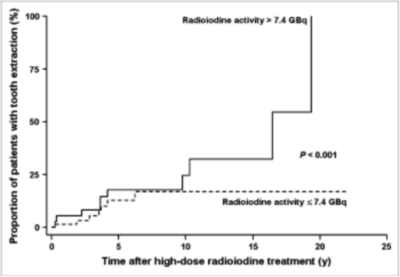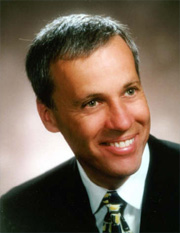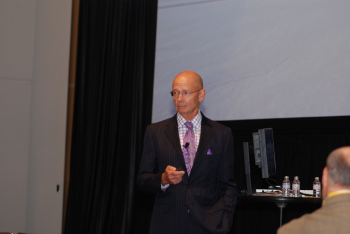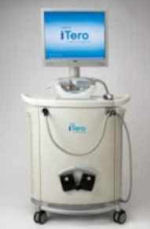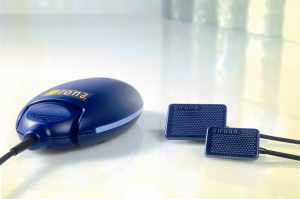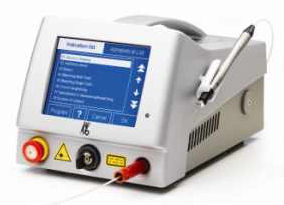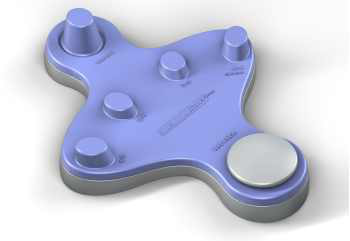Ah, for the glamorous life of a cosmetic dentist. No more bratty kids or cranky codgers filling up the waiting room. No more extractions, fillings, or root canals. You'll spend your afternoons bleaching Lindsay Lohan's teeth or straightening Ashton Kutcher's smile. Who knows? You could end up with your own "Extreme Makeover"-style reality TV show.
Before you decide enter into the realm of pure aesthetics, though, take heed. We've drilled deep inside the world of cosmetic dentistry, peeled off its thin veneer and revealed the decay beneath.
OK, maybe that's overstating it a bit. But we have talked to some of the top dental professionals in the country and got the inside skinny on the booming world of cosmetics. Bottom line? It's not as easy as it looks or as profitable as it seems (more on that later).
Part I: So you wanna be a cosmetic dentist
You may be a whiz with an explorer and a root canal ace, but the differences between general dentistry and aesthetic dentistry are more than cosmetic. Success demands skills that often reside outside the comfort zone for many general dentists. Here are some keys to success.
Choose your lab carefully. Your work will only be as good as the lab you partner with, so pick a good one -- or more than one. Surveys by the American Academy of Cosmetic Dentists (AACD) show that 8 out of 10 dentists use multiple labs, often a cheaper one for basic treatments and higher-end techs for cosmetic work.
"Dentists really need to shop around for the right lab," said Laura Kelly, who holds the distinction of being both the first woman and the first nondentist to be named president of the AACD. A ceramist by trade, she knows quality cosmetic dentistry requires close collaboration between GDs and techs. "You need to make sure their skill level mirrors where you want to go with your practice, you share the same philosophy, and speak the same language."
And once you've got a lab you like, work hard to maintain a good relationship. When they've done a good job, show them the "after" pictures and send a little sugar their way, Kelly said. "Too often the ceramist only hears when adjustments need to be made," she said. "Smart dentists will call them up and say, 'Hey thanks, you really made me look good.' You can make a technician's month with just one phone call."
Polish your shutter skills. Being good with a handpiece is essential to being a successful cosmetic dentist. But how good are you with a Nikon or an Olympus? No patient will engage you without first checking your portfolio. If your shots are out of focus, over- or underexposed, or simply unattractive, you won't gain their trust -- no matter how good you are. You'll also want to bring your photos when you visit a new lab, so they can understand the standards of work you expect. One step in the right direction: Take a dental photography class (the AACD offers some).
"I see photographs in dental journals and I'm embarrassed for my profession," said Dr. David Landau, an accredited member of the AACD who operates a
private practice in San Diego. "The teeth look fake, the gums look red or washed out instead of pink and healthy, and the exposure is so off you can't tell the chroma and value of the porcelain. As a member of the AACD, one of the first things you learn is how to be an excellent clinical photographer."
Beware trouble patients. Some people just can't be pleased -- and they're definitely not the ones you want coming to you for cosmetic work. One leading aesthetic practitioner who asked to remain anonymous tells the story of a woman who came into his office looking for extensive cosmetic work.
"The first thing she tells me is how her plastic surgeon 'butchered' her," he said. "Then she showed me a line over her eye that I couldn't see. The use of the word 'butchered' was a real warning sign that she had expectations no dentist in the world could possibly fulfill." He ultimately declined to take on the case.
"As an aesthetic dentist, you think 'I can do that,' but if you haven't read the patient well, it will cost you a lot of time and money," he added.
Avoid Dumbell U. Cosmetic dentistry isn't an ADA-accredited specialty, but continuing education in cosmetic techniques is a must for any general dentist stepping into this realm. "The technology develops so quickly that if you don't take courses every year you'll fall behind," warned Dr. Dan Nathanson, professor and chairman of the department of restorative sciences and biomaterials at Boston University. Just be careful about what that continuing education course really qualifies you for.
For example, taking a week-long course in occlusion doesn't mean you're able to perform complex prosthodontic procedures. "Some graduates get a false sense of security about their ability to do these things," he said. "If we could teach you to be a prosthodontist in a week, we wouldn't be offering a three-year degree."
General dentists who want to improve their skill set in cosmetic dentistry should look for courses associated with the local chapters of the AACD, American Academy of Esthetic Dentistry (AAED), or a university linked to those organizations. One example is Boston University (Nathanson is a director of the AAED); another is UCLA, where Dr. Brian LeSage, director of its Aesthetic Continuum, is also an AACD fellow.
Beware the malpractice monster. When it comes to patient lawsuits, you're three times as likely to get sued over crown and bridge work than dentures or surgical extractions, according to
surveys by the ADA. But focusing on cosmetic dentistry doesn't guarantee you'll get sued less. It could make you a bigger target.
"Whenever you are dealing with the very subjective opinions of patients [getting cosmetic procedures], you risk displeasing them," noted attorney
Frank Recker, an attorney and dentist in Marco Island, FL. "And an unhappy patient generally poses a greater risk of suit in my view, whether meritorious or not."
The best way to avoid legal jeopardy is to ensure that your patients understand everything that's involved in the procedure, and that you understand what the patient is expecting you to deliver, Landau said. (See "Beware trouble patients" above.)
Know when to call for backup. As a general dentist, you can perform virtually any procedure a specialist could -- but you probably shouldn't. If you get bitten by the malpractice monster, you'll be held to the standard of care typically provided by a board-certified specialist. Knowing which cases are too complex or exceed your skillset not only saves you money in the long run, it's also better for the patient.
"Different general dentists have different comfort zones," Landau said. "Sometimes to get to the ideal gum position you have to move the gum without moving the bone, which any dentist can do. Sometimes you have to move the gum and the bone, which some GDs wouldn't feel comfortable with. If you have to replace an anterior tooth with an implant, you're probably best referring it out to a specialist who understands the demands of making an implant look like a natural tooth erupting out of the gums."
But understanding the patient's cosmetic needs requires a trained eye, he said. "You need to understand what a natural healthy gum line should look like. A lot of general dentists don't know what they don't know."
"So much of what we do these days is in concert with cosmetic dentists, we're almost like a team," said Dr. Donald Joondeph, a professor emeritus of orthodontics at the University of Washington who operates a
private practice in Bellevue. "The GD, orthodontist, periodontist, prosthodontist, oral surgeon -- each of us has his own role to play. We all look at the case and plug in to make the end product the best it can be."
One example, Joondeph said, would be a missing tooth that requires an implant. "Let's say a person had an upper lateral incisor congenitally absent and the adjacent teeth have drifted into the space making the space too small for an implant," he said. "A 'team' would then be required: an orthodontist to align the teeth and open the space where the tooth was missing, making the space the same size as the one on the opposite side; a periodontist or oral and maxillofacial surgeon to place the implant; and the general dentist to place the crown."
Get accredited. If you're serious about aesthetics, the AACD offers an accreditation program, but getting your sheepskin is no trivial task. Dentists must pass a written exam, then submit five patient cases over five years to a board of reviewers who evaluate each case on 50 separate criteria, and then pass an oral exam. Only a very small percentage of the dentists achieve accreditation within the five-year window the AACD allows. To become an accredited fellow (42 worldwide) requires a far more rigorous examination of clinical ability. The
Academy of Comprehensive Esthetics (ACE), likewise has a tough certification program.
Just remember that the benefits are largely personal -- cosmetic dentistry is not an ADA board-certified specialty. Getting that sheepskin doesn't mean you'll automatically be able to charge more for your services, either. And many dentists who lack the AACD credential still do excellent work, saidDr. Larry Addleson, an accredited fellow and past president of the AACD who operates a
private practice in San Diego. "But you can know for sure that those who become accredited are capable of performing at a high level."
Part II: Where's the money?
OK, here's the part of the story you've been waiting for. Is cosmetic dentistry your road to riches?
On one hand, pay for dentists has never been better. According to surveys conducted by the ADA, average annual salaries for dental practitioners rose from $166,000 in 2000 to nearly $186,000 in 2004. The number of cosmetic procedures rose 12.5% over roughly the same period, according to surveys conducted by the American Academy of Cosmetic Dentistry (AACD).
Ipso facto, cosmetics must good for your bottom line, right?
Not necessarily. While dental incomes are rising -- and cosmetic procedures certainly add to the kitty -- the main reason dentists make more money is that the ratio of dentists to the general population has been dropping since the 1980s, according to Boston University's Nathanson. There are more sick teeth and relatively fewer people to fix them.
Another limiting factor is insurance. Purely cosmetic treatments, such as veneers or teeth whitening, are generally not covered by insurance. That means patients must foot the bill themselves or finance the work through third parties like
CareCredit or
Dental Fee Plan (a Capital One credit card used to pay for dental work). Nearly 82% of dentists offer third-party financial help, according to the AACD.
The good news for dentists is that instead of getting paid a percentage of your fees by a PPO or insurance plan, you'll usually get paid in full, said Dr. Charles Blair, a
practice management consultant in Charlotte, NC, and author of
Coding with Confidence: The "Go-To" Guide for CDT-2007/2008.
The bad news: cosmetic dentistry is more sensitive to fluctuations in the market. When the national economy hits a tailspin, everyone has fewer reasons to smile -- or to pay $500 to whiten their teeth.
The inconvenient truth? "If you're doing cosmetic dentistry right, you're probably not making a lot of money," said Dr. Larry Addleson. For one thing, doing it right means using higher quality -- and more expensive -- labs.
"You can get a crown or veneer made in an offshore lab for $100, or you can pay a master ceramist $600," he said. "If the veneer costs you $100 and you charge the patient $800, you can make more money. But you can't charge six times as much for a $600 veneer and expect to remain competitive."
You must also be willing to send things back to the lab for a do-over -- or several do-overs -- until you and the patient are satisfied. Whether dentists can recoup the added costs depends on their relationship with both the lab and their patients, Kelly said, but the same market rules apply.
"You have to be willing to reject things that most dentists would say are beautiful," said Dr. David Landau. "When a cosmetic case comes back from the lab we call it a 'first fitting,' not delivery of the final product. Every time you do a fitting and reject the work, you lose money."
Doing it right means also taking more time to work with patients, especially when dealing with complex cases. It can mean spending more time and money for continuing education, and paying more for qualified staff.
Cosmetic dentists also incur greater advertising costs, according to Blair. "Pure cosmetic dentists typically spend 7% to 10% of their gross on advertising, versus around 1% for most general dentists," he said.
In his 25 years of consulting, Blair said he's seen a handful of GDs give up bread and butter dentistry and focus entirely on cosmetic work, but few end up sticking with it.
"Some people have walked the plank, gotten out of the PPOs and regular insurance plans, and tried to specialize only in cosmetics," he said. "But I've seen some stumbling there. Many have had to run back to general dentistry. I caution dentists to maintain their bread and butter practice and let cosmetics be the gravy."
For dentists like Addleson, money isn't the motivator. It's about raising the overall quality of dental work for his community as a whole -- one reason why he's a director of the San Diego Advanced Study Group and currently mentoring 10 dentists in his area.
"If you're really committed to cosmetic dentistry, you're not going to get rich," he said. "It's an inner passion. Yesterday doesn't matter. You're only as good as what you do today. It's like trying to understand why Van Gogh cut off his own ear. It's hard for people who don't share this passion to understand."
Freelance writer Dan Tynan prefers his dentists at a distance -- preferably over the phone.
